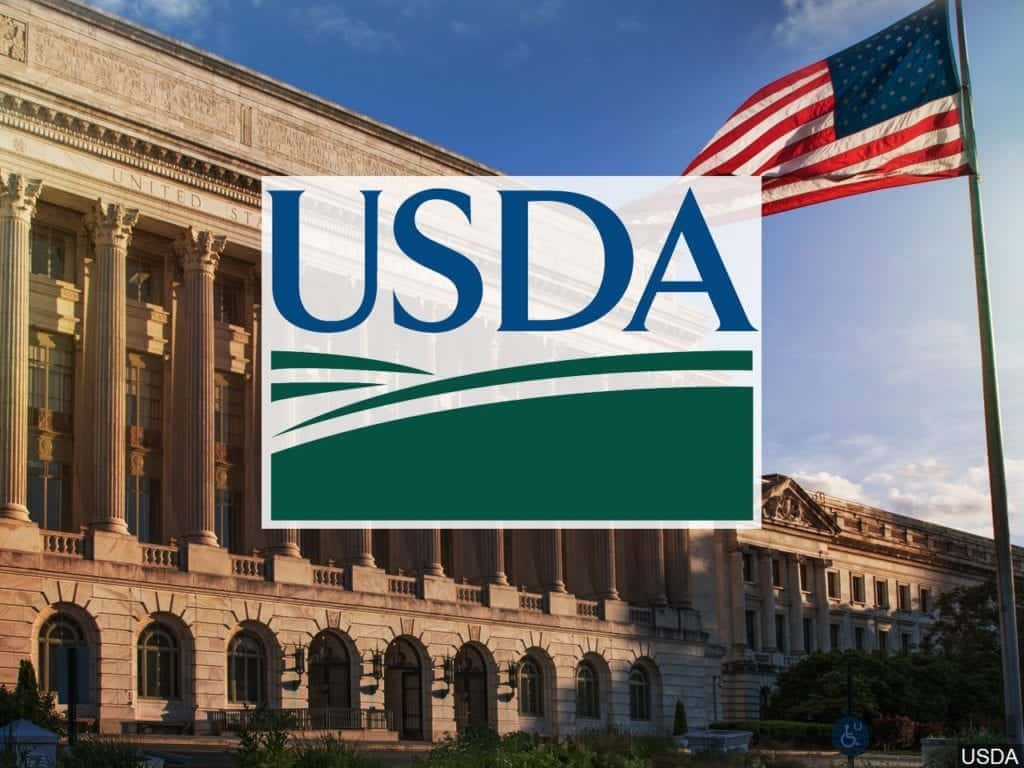
USDA
Washington, D.C., June 29, 2020 – The U.S. Department of Agriculture (USDA) today released its annual Technology Transfer Report (PDF, 4.1 MB), which highlights agricultural innovations from scientists and researchers that are solving problems for America’s farmers, ranchers, foresters, and consumers; and creating opportunities for American businesses to thrive.
USDA’s total number of income-bearing licenses in Fiscal Year 2019 was 510, total number of active Cooperative Research and Development Agreements (CRADAs) was 278, total number of CRADAs entered by USDA was 95, and total number of new patent applications filed was 97.
“The outcomes and impacts in this comprehensive report represent a tremendous amount of scientific excellence and creativity in finding solutions to complex problems,” said Deputy Under Secretary Scott Hutchins, who leads USDA’s Research, Education, and Economics mission area. “The value-added innovations highlighted in this report are an example of the strides USDA is making to bring forth the vision set by the USDA Science Blueprint and USDA’s Agriculture Innovation Agenda that Secretary Perdue announced earlier this year.”
New agricultural innovations showcased include development of ‘USDA Red,’ the world’s first red-leaf spinach that has 53 percent higher antioxidant capacity, and a new, responsive, web data collection system for the 2017 Census of Agriculture that enhances the web experience for agricultural producers responding to Ag Census surveys.
“I’m proud to share the incredible work of our dedicated USDA team,” said Hutchins.
BACKGROUND:
USDA issues this report each year on technology transfer activities covering Agricultural Marketing Service, Animal and Plant Health Inspection Service, Agricultural Research Service, Economic Research Service, Foreign Agricultural Service, Food Safety and Inspection Service, Forest Service, National Agricultural Statistics Service, National Institute of Food and Agriculture, Natural Resources Conservation Service, and Rural Development.
Select highlights from the report include (along with corresponding page numbers in the report):
- Testing more than 10,000 pesticide samples and generating more than 2.5 million data points. All data are available to the public electronically on the Pesticide Data Program website. (p. 17)
- An aerially delivered biodegradable “bait cartridge” system designed to target brown treesnakes. (p. 46)
- New technology to mass produce and release parasitoids for controlling Asian citrus psyllid, a pest of citrus-growing areas in the United States and vector of a bacterium that causes citrus greening disease or Huanglongbing. (p. 59)
- New freezing technology that retains fresh-like fruit quality when thawed. The method uses 70 percent less energy compared with conventional freezing methods and shows promise to transform the $54 billion U.S. frozen foods market. (p. 92)
- Teaming with Air Burners, Inc., to optimize biochar production for the marketplace. Biochar, a fire remnant provides a valuable addition to soil for agriculture and gardening purposes as well as contributing to overall forest health. (p.291)
- Expansion of a Public Health Information System Export Module, which allows industry to file electronic export applications and receive electronic certification. (p. 333)
- Geospatial decision support products used for rapid response to assess flooded areas and identify potential crop losses caused by Hurricanes Barry and Dorian, as well as flooding in the Midwest during the spring of 2019. (p. 346)
- Development of a Specialized Lure and Pheromone Application Technology (SPLAT) designed for use as an integrated pest management (IPM) solution to target agricultural pests. (p. 365)
- Development of a Conservation Assessment Ranking Tool (CART) that modernizes and streamlines USDA conservation planning and program delivery, reduces workload on field staff, and improves the customer experience by creating an efficient application process. (p. 383)
